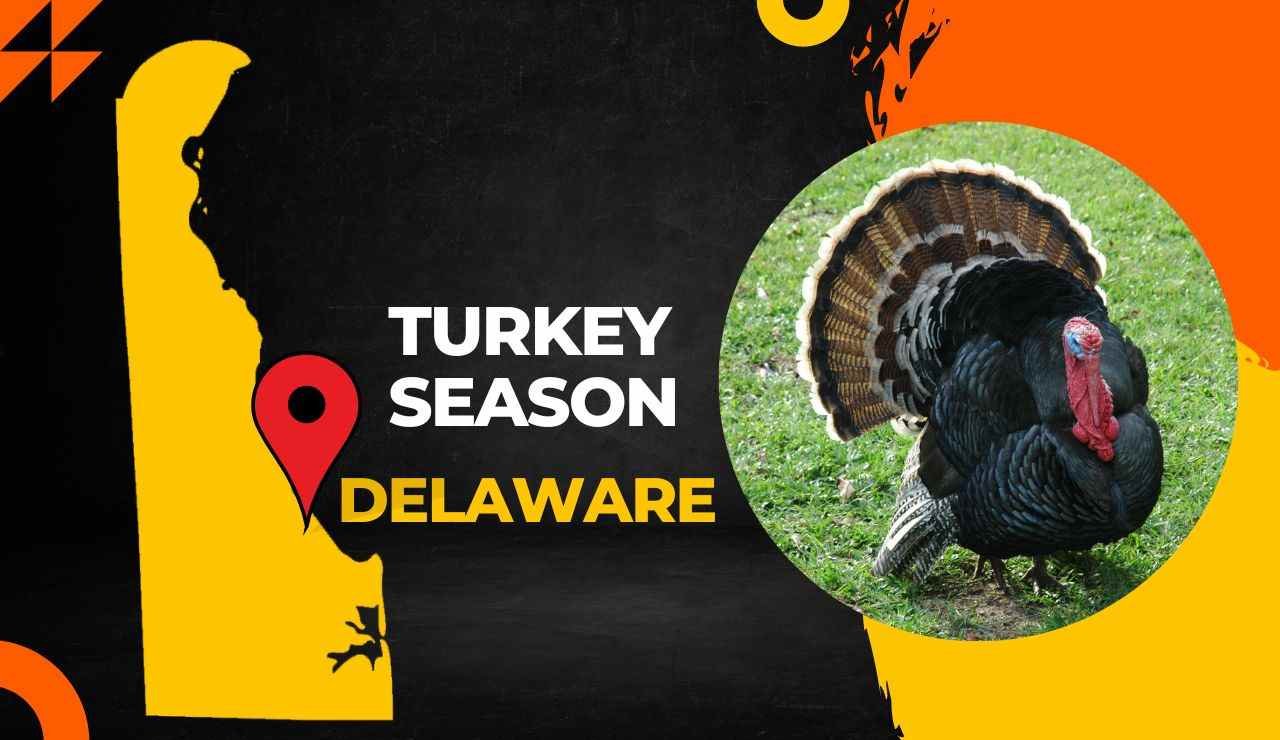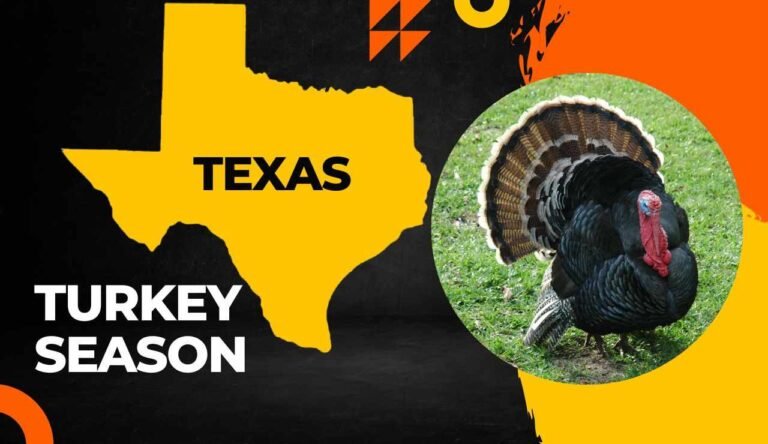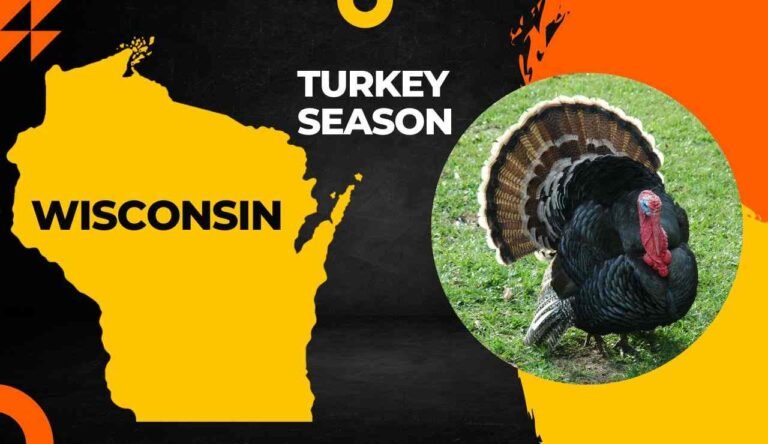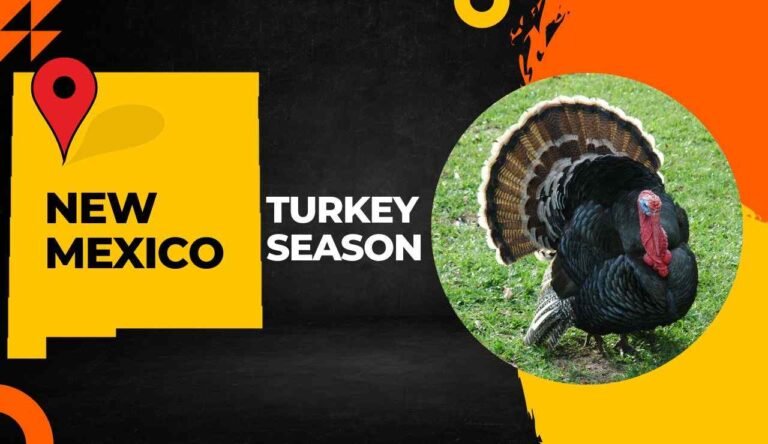Delaware Turkey Season 2025-2026: [Everything You Need to Know Dates, Regulations, Bags & More]
Planning your spring gobbler adventure in the First State? You’ve landed in the right spot. This guide breaks down everything you need to know about the 2025-2026 wild bird hunting opportunities in this compact but surprisingly productive Mid-Atlantic destination. From specific calendar dates to management zones, licensing requirements, and insider tips—we’re covering it all without the fluff.
Whether you’re a seasoned hunter or planning your first springtime pursuit, understanding the regulations, timing, and strategies specific to this region will set you up for success. Let’s dive into what makes hunting in this coastal state unique and how you can make the most of the upcoming seasons.
🗓️ Quick Reference: 2025-2026 Hunting Calendar
Here’s your at-a-glance breakdown of the primary wild bird opportunities for the upcoming cycle:
| Hunt Type | Opening Day | Closing Day | Legal Methods |
|---|---|---|---|
| Spring Regular | April 11, 2026 | May 9, 2026 | Shotgun (10-28 gauge, .410), Muzzleloader (smoothbore 20-10 gauge), Longbow, Compound, Crossbow |
| Youth & Non-Ambulatory Special | April 4, 2026 | April 5, 2026 | Same as regular; adult supervision required |
| Fall Either-Sex | CLOSED | CLOSED | Currently suspended statewide |
Hunting Hours: One half-hour before sunrise until 1:00 PM daily
Bag Limit: One bearded bird per year (statewide aggregate)
Sunday Hunting: NOW PERMITTED! (Except May 10, 2026)
📋 Complete Season Breakdown: Public & Private Land Details
Spring 2026 Regular Season (Statewide)
Dates: April 11 – May 9, 2026
Legal Birds: Bearded birds only (gobblers and bearded hens qualify)
Daily Hours: 30 minutes before sunrise to 1:00 PM
Bag Limit: One bird total for the entire season
Methods: All non-electronic calls permitted; shotguns (shot size #4 or smaller including TSS), archery equipment (minimum 7/8″ broadhead width)
Sunday Hunting: Yes, permitted throughout (closed May 10)
Private Land: Hunters with valid licenses can hunt every day of the regular period on private property where they have permission.
Public Land (State Wildlife Areas): Access requires a lottery permit for one of four week-long segments:
- Segment A: April 11-17
- Segment B: April 18-24
- Segment C: April 25-May 1
- Segment D: May 2-9
Public land applications must be postmarked by January 6, 2026 for the lottery drawing. Top public hunting spots include Redden State Forest, Norman G. Wilder Wildlife Area, and Milford Neck Wildlife Area. The 2025 harvest saw a record 171 birds taken from public lands!
Youth & Non-Ambulatory Hunter Special Weekend
Dates: Saturday-Sunday, April 4-5, 2026
Eligible Hunters: Youth ages 10-15 and non-ambulatory wheelchair users
Requirements:
- Youth ages 13-15 need junior hunting license + Basic Hunter Safety + approved course
- Youth under 13 need License Exempt Number (LEN)
- Direct supervision by licensed adult (21+) who has completed the mandatory education course
- Adult companions cannot carry firearms during this hunt
Access: Open statewide on all areas (both public and private where permitted)
The 2025 youth hunt was incredibly successful with 63 gobblers harvested over the two days—up nearly 69% from the previous year’s single-day event!
🌍 Management Zones & Regional Breakdown
The state divides its wild bird habitat into four management regions containing 18 wildlife management zones. Understanding these helps you strategize where to focus your efforts:
Interior Region (Zones 2, 4, 6, 7, 8, 10)
- 2025 Harvest: 342 birds (42.7% of statewide total)
- Characteristics: Hardwood forests, agricultural edges, productive gobbler habitat
- Strategy: Focus on ridge ends overlooking creek bottoms
Southern Region (Zones 11-17)
- 2025 Harvest: 284 birds (35.5%)
- Characteristics: Mix of pine plantations and farmland
- Strategy: Excellent mid-season opportunities as birds disperse
Bayshore Region (Zones 3, 5, 9)
- 2025 Harvest: 155 birds (19.3%)
- Characteristics: Coastal influence, tidal marsh edges
- Strategy: Birds often roost near water; morning setups near roosting areas
Northern Region (Zones 1A, 1B)
- 2025 Harvest: 20 birds (2.5%)
- Characteristics: More urbanized, limited habitat
- Strategy: Private land access essential; smaller population
🕊️ Related Bird Species You’ll Encounter
While pursuing your gobbler, you’ll likely cross paths with other upland and migratory species. Here’s what else inhabits the First State during spring:
Upland Game Birds
- Ring-necked Pheasant: Season runs November 24 – February 28 (males only, 2 daily limit). While you won’t be hunting them in spring, they share similar agricultural habitats.
- Bobwhite Quail: Wild populations are protected; only pen-raised birds can be hunted with special permits November 24 – January 3.
- Mourning Dove: Popular gamebird with seasons typically in September and late December through January.
- Woodcock: Migratory species with limited presence; falls under federal migratory bird regulations.
Protected Species to Identify
- Delmarva Fox Squirrel: Endangered! Found near Assawoman Wildlife Area, Nanticoke Wildlife Area, Prime Hook NWR, Redden State Forest, and Trap Pond State Park. Larger than gray squirrels with silver-gray fur and creamy belly—please report sightings to 302-735-3600.
- Ruffed Grouse: While present in neighboring states, they’re quite rare in the First State.
📖 Essential Regulations for 2025-2026
Understanding these rules keeps you legal and safe in the field:
Mandatory Requirements
✅ Valid hunting license (resident or non-resident)
✅ Completed Division-approved education course (hunters 13+)
✅ Harvest Report Card (issued automatically with license if course completed)
✅ Public land permit (if hunting State Wildlife Areas or State Forests)
✅ Conservation Access Pass (for vehicle access to wildlife areas)
Legal Equipment
Firearms:
- Shotguns: 10, 12, 16, 20, 28 gauge, and .410
- Smoothbore muzzleloaders: 10-20 gauge
- Shot sizes: #4 or smaller (TSS, lead, and other types all legal)
Archery:
- Longbows, compound bows, crossbows permitted
- Minimum broadhead width: 7/8 inch
Calls:
- All NON-ELECTRONIC calls legal
- Use caution with gobbler calls (safety concern—may attract other hunters)
Prohibited Practices
❌ Dogs or bait (bait must be removed 10+ days before hunting)
❌ Shooting roosted birds
❌ Driving birds
❌ Electronic calls
❌ Hunting within 100 yards of occupied structures (without permission)
❌ Wearing visible red, white, or blue garments (safety requirement)
❌ Female pheasants (separate from bird hunting, but good to know)
Harvest & Registration
- Punch your Harvest Report Card immediately upon harvest (before moving bird)
- Register within 24 hours via Digital DNREC or call 1-855-DEL-HUNT (1-855-335-4868)
- No physical check station visit required (digital registration only)
- Attach Possession Tag if bird leaves your immediate possession (processor, taxidermist, etc.)
- Record registration number on Harvest Report Card in permanent ink
💰 License & Tag Fees for 2025-2026
Budget accordingly with these current fee structures:
| License Type | Resident | Non-Resident | Agent Fee |
|---|---|---|---|
| Adult Hunting License (16-64) | $39.50 | $199.50 | $2.50 |
| Junior Hunting License (13-15) | $5.00 | $50.00 | $2.50 |
| 3-Day Small Game (Non-Resident) | N/A | $75.00 | $2.50 |
| Conservation Access Pass (Annual) | $32.50 | $65.00 | $1.50 |
| Conservation Access Pass (3-Day) | $10.00 | $20.00 | $1.50 |
Important Notes:
- Licenses run July 1 – June 30 annually
- Residents 65+ are exempt from license requirements (must show proof of age/residency)
- Hunter Education required for those born after January 1, 1967
- Agent fees are charged by vendors in addition to license costs
- Course completion is FREE and mandatory before your first hunt
No Separate Tag Fee: Unlike some states, there’s no additional stamp or tag cost specifically for wild birds. Your hunting license covers your one-bird annual bag limit once you’ve completed the mandatory education course.
Looking for hunting opportunities in other states? Check out the Alabama turkey season for a completely different regional experience, or explore the western approach with Colorado turkey hunting.
📝 Licensing Requirements Checklist
Before you head afield, ensure you’ve completed these steps:
For First-Time Hunters (Age 13+)
- ✅ Complete 10-hour Basic Hunter Safety Course (if born after January 1, 1967)
- ✅ Complete mandatory Wild Bird Education Course (Division-approved)
- ✅ Purchase hunting license (resident or non-resident)
- ✅ Print Harvest Report Card (automatic after course completion)
- ✅ Apply for public land lottery permit if hunting State Wildlife Areas (deadline: January 6, 2026)
- ✅ Purchase Conservation Access Pass (if accessing wildlife areas by vehicle)
For Youth Hunters (Under 13)
- ✅ Obtain License Exempt Number (LEN) – FREE
- ✅ Secure adult supervision (21+ with valid license and completed course)
- ✅ No course requirement for under 13, but must be supervised
- ✅ Must be of sufficient size/strength to safely handle firearm
For Returning Hunters
- ✅ Renew hunting license (if expired)
- ✅ Confirm course completion shows on license
- ✅ Reprint Harvest Report Card from Digital DNREC if needed
- ✅ Apply for new public land permit (previous years don’t carry over)
Where to Get Licensed
- Online: Digital DNREC ePermitting System
- Authorized license agents statewide
- Course information: Contact Hunter Education Program at 302-735-3600
❓ Frequently Asked Questions
Q: Can I hunt on Sundays in the First State?
A: Yes! Sunday hunting for wild birds was approved and is now permitted throughout the spring period. However, note that May 10, 2026 (the Sunday after closing day) is NOT open. Also, be aware that some public lands like Bombay Hook National Wildlife Refuge still prohibit Sunday hunting due to federal regulations.
Q: Why does the hunt end at 1:00 PM?
A: This is a common regulation designed to reduce hunter encounters and conflicts. As morning progresses, hens typically leave gobblers to tend their nests. The afternoon closure gives birds time to rest and reduces safety concerns in the woods.
Q: I killed a banded bird—what do I do?
A: Congratulations! The state conducts ongoing research using leg bands and radio transmitters. Call the number on the metal leg band (302-831-4621) or the Division office (302-735-3600) to report it. You still must register your harvest normally. Don’t target or avoid banded birds—treat them as you would any legal bird.
Q: Can I use a .22 rifle?
A: No. Rifles and handguns are NOT legal for wild bird hunting. Shotguns, smoothbore muzzleloaders (specific gauges), and archery equipment are your only legal options.
Q: What happened to fall season?
A: The state closed the fall either-sex wild bird hunting season statewide beginning in Fall 2025. This decision was made to support population management and allow spring harvests to continue thriving. The First State now offers ONLY spring hunting opportunities.
Q: Do I need a federal stamp?
A: No. Unlike waterfowl, wild birds don’t require a federal migratory bird stamp. Your state hunting license (plus completed education course) is all you need beyond any public land permits.
Q: How do I know if I’m in the right management zone?
A: Download the wildlife area maps from the DNREC Wildlife Areas page. Interactive maps are available online, and printed versions are in the official hunting guide. Zones are clearly marked on most wildlife areas.
Q: Can I hunt Prime Hook or Bombay Hook National Wildlife Refuges?
A: Yes, with a special lottery permit. These federal refuges participate in the state’s public land lottery system. Prime Hook allows Sunday hunting; Bombay Hook does NOT permit Sunday hunting. Apply by the January 6, 2026 deadline.
Q: What’s the hunter orange requirement?
A: There’s NO hunter orange requirement specifically for wild bird hunting. However, it’s always a smart safety practice, especially on public land. Note: Small game hunters on State Wildlife Areas must wear 400 square inches of orange, so if you’re also pursuing other species, wear it.
🎯 Quick Tips for Success
Scout Early: The state’s record 801-bird harvest in 2025 proves the population is healthy. Scout roost sites in March and early April before the opener.
Target the Interior Region: With over 42% of the statewide harvest, zones 2, 4, 6, 7, 8, and 10 consistently produce. Focus on hardwood ridges near agricultural fields.
Consider Public Land: Don’t overlook Redden State Forest and Norman G. Wilder Wildlife Area—both produced excellent harvests in 2025 with the addition of Sunday access.
Go Mobile: With hunting only until 1 PM, you have limited time. If a setup isn’t working by 9 AM, move to fresh ground.
Mind the Weather: The coastal influence means spring weather can be unpredictable. Pack layers and rain gear.
Registration is Fast: The new digital system makes registration simple. Have your phone ready to register immediately after your successful hunt.
For more regional hunting insights, explore opportunities in nearby states like the Connecticut turkey hunting season, which offers different timing and regulations.
🏁 Wrapping Up Your 2026 Preparation
The First State continues to surprise hunters with its robust wild bird population and improving access. The 2026 spring campaign runs from April 11 through May 9, with a special youth weekend April 4-5. One bearded bird per season is your limit, and Sunday hunting is now fully permitted (with minor exceptions).
Complete your mandatory education course well before the lottery deadline of January 6, 2026. Whether you’re hunting private farmland in the Interior Region or drawing a public land permit for Redden State Forest, preparation and knowledge of regulations will maximize your success.
The addition of digital registration, Sunday hunting, and expanded public land opportunities makes this one of the most hunter-friendly periods in recent memory. With last year’s record harvest demonstrating healthy populations, 2026 looks equally promising.
Get your license, scout your spots, and mark your calendar. The First State’s gobblers are calling.
⚠️ Official Disclaimer
This guide is compiled from publicly available information and is intended for educational purposes. Hunting regulations can change, and it’s your responsibility as a hunter to verify all dates, requirements, and regulations before hunting.
Always confirm current seasons and regulations with official sources:
🔗 Official Source: Delaware Division of Fish & Wildlife
📞 Contact DNREC: 302-739-9912 or 302-735-3600
📱 Digital Registration: Digital DNREC System
For additional information on hunting regulations and conservation efforts, visit the National Wild Turkey Federation for research-backed management insights and hunter resources.
Hunt safely, hunt legally, and enjoy the spring woods. Good luck this season! 🦃🏹
- Florida Turkey Season 2025-2026: Latest Hunting Dates, Licenses & Rules Available! - October 16, 2025
- Delaware Turkey Season 2025-2026: [Everything You Need to Know Dates, Regulations, Bags & More] - October 16, 2025
- Connecticut Turkey Season 2025-2026: [Dates, Regulations, Bag Limits & More] - October 16, 2025






